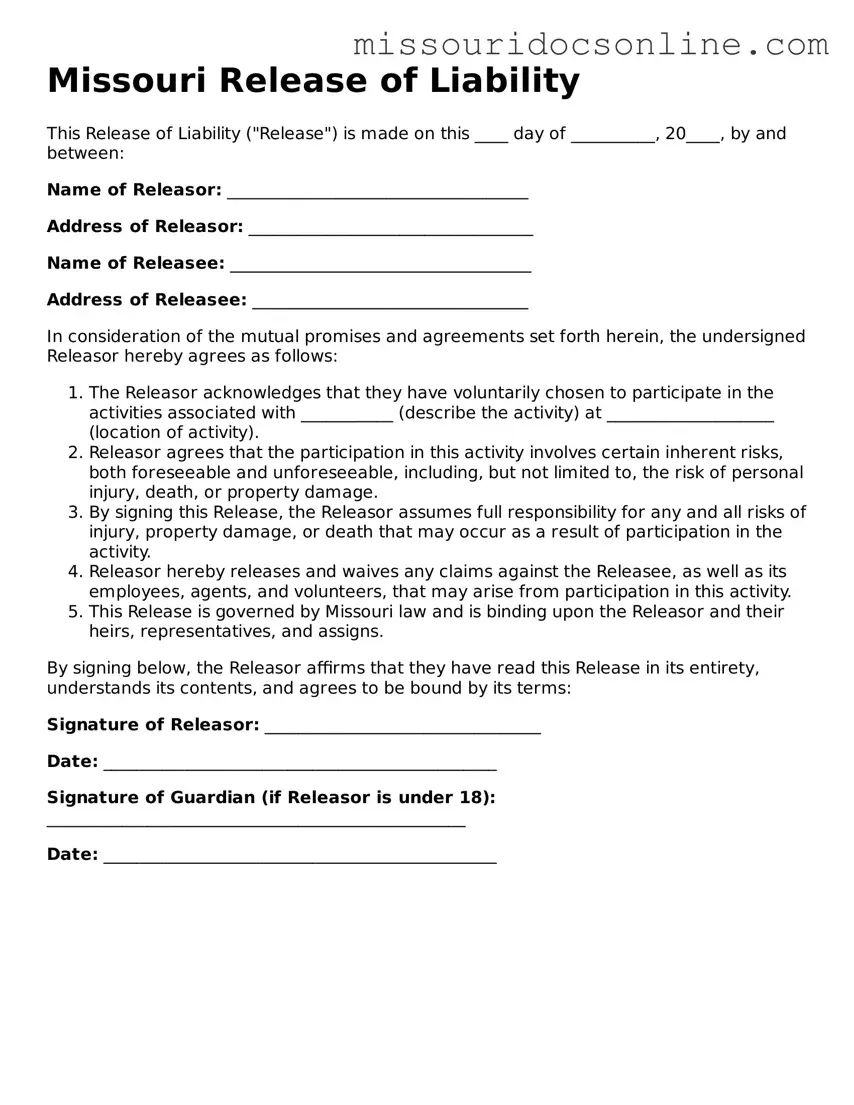Detailed Steps for Filling Out Missouri Release of Liability
Completing the Missouri Release of Liability form is an important step in ensuring that all parties understand the terms and conditions surrounding an activity. Following the steps below will help you accurately fill out the form and prepare it for submission.
- Obtain the Missouri Release of Liability form from a reliable source, such as a legal website or your local government office.
- Read the entire form carefully to understand its contents and implications.
- Fill in your name and contact information in the designated fields at the top of the form.
- Provide the name of the organization or individual that is being released from liability.
- Clearly describe the activity or event for which the release is being granted.
- Specify the date of the activity or event.
- Include any additional details that may be relevant, such as location or specific terms of participation.
- Sign and date the form at the bottom, ensuring that your signature is legible.
- If applicable, have a witness sign the form as well.
- Make copies of the completed form for your records before submitting it to the relevant party.
After completing the form, review it to ensure all information is accurate. This will help prevent any misunderstandings or complications later. Once submitted, the form will serve as a record of the agreement between the parties involved.
